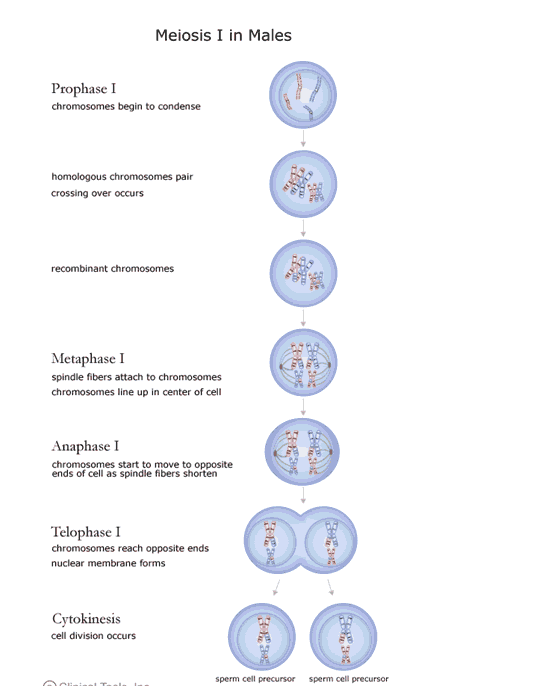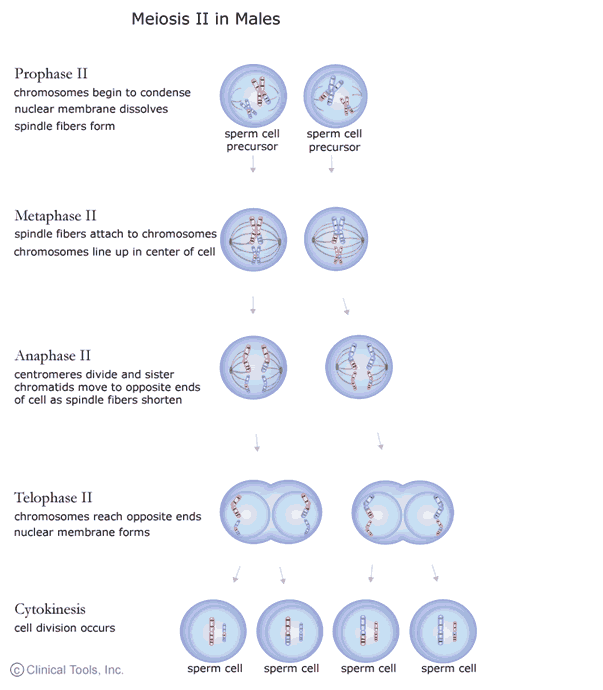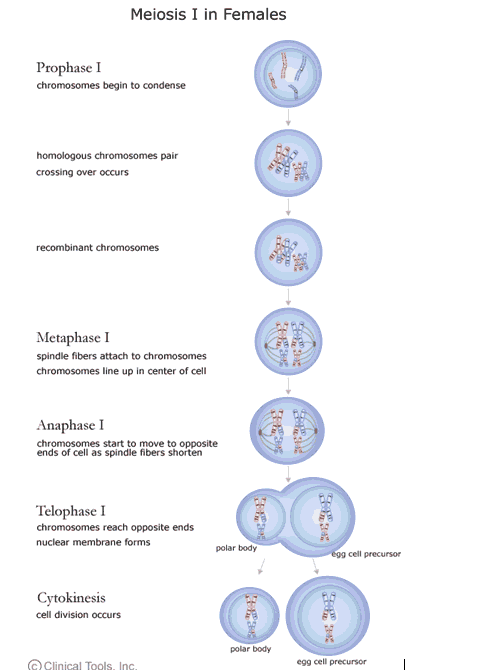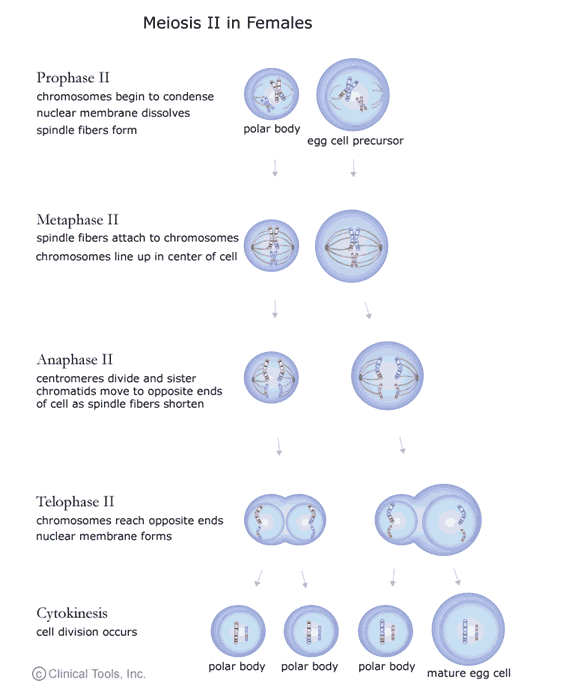Meiosis is the form of eukaryotic cell division that produces haploid sex cells or gametes (which
contain a single copy of each chromosome) from diploid cells (which contain two copies of each
chromosome). The process takes the form of one DNA replication followed by two successive
nuclear and cellular divisions (Meiosis I and Meiosis II). As in mitosis, meiosis is preceded by a
process of DNA replication that converts each chromosome into two sister chromatids.
Meiosis I
Meiosis I separates the pairs of homologous chromosomes.

In Meiosis I a special cell division reduces the cell from diploid to haploid.
Prophase I
The homologous chromosomes pair and exchange DNA to form recombinant chromosomes. Prophase I is divided into five phases:
• Leptotene: chromosomes start to condense.
• Zygotene: homologous chromosomes become closely associated (synapsis) to form pairs of chromosomes (bivalents) consisting of four chromatids (tetrads).
• Pachytene: crossing over between pairs of homologous chromosomes to form chiasmata (sing. chiasma).
• Diplotene: homologous chromosomes start to separate but remain attached by chiasmata.
• Diakinesis: homologous chromosomes continue to separate, and chiasmata move to the ends of the chromosomes.
Prometaphase I
Spindle apparatus formed, and chromosomes attached to spindle fibres by kinetochores.
Metaphase I
Homologous pairs of chromosomes (bivalents) arranged as a double row along the metaphase plate. The arrangement of the paired chromosomes with respect to the poles of the spindle apparatus is random along the metaphase plate. (This is a source of genetic variation through random assortment, as the paternal and maternal chromosomes in a homologous pair are similar but not identical. The number of possible arrangements is 2n, where n is the number of chromosomes in a haploid set. Human beings have 23 different chromosomes, so the number of possible combinations is 223, which is over 8 million.)
Anaphase I
The homologous chromosomes in each bivalent are separated and move to the opposite poles of the cell
Telophase I
The chromosomes become diffuse and the nuclear membrane reforms.
Cytokinesis
The final cellular division to form two new cells, followed by Meiosis II. Meiosis I is a reduction division: the original diploid cell had two copies of each chromosome; the newly formed haploid cells have one copy of each chromosome.
Meiosis II
Meiosis II separates each chromosome into two chromatids.

The events of Meiosis II are analogous to those of a mitotic division, although the number of chromosomes involved has been halved.
Meiosis generates genetic diversity through:
• the exchange of genetic material between homologous chromosomes during Meiosis I
• the random alignment of maternal and paternal chromosomes in Meiosis I
• the random alignment of the sister chromatids at Meiosis II
Meiosis in females


Titany answered the question on
November 18, 2021 at 07:55